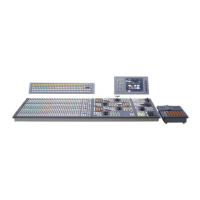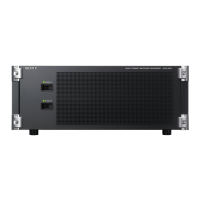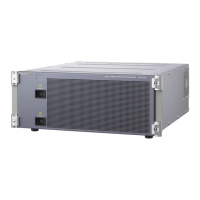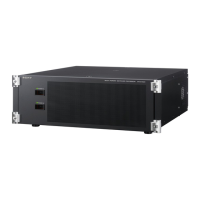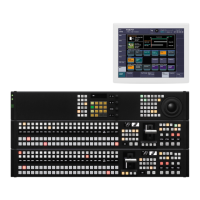220
DME
Chapter 11 DME Operations
Chapter
11
DME Operations
DME
DME (Digital Multi Effects) allows you to add three-
dimensional effects such as image movement, rotation,
magnification and shrinking, as well as a wide variety of
special effects. DME is the general name for all of these
effects.
You can use up to eight channels as dedicated DME
channels.
Each channel can be used on its own or in combination
with other channels, which allows you to create advanced
effects with more complexity.
Functions that can be used differ with the models of DME.
For details, see“Functional Differences With Models of
DME” (page 355).
Three-Dimensional Transformations
Transformation is the process of placing a video image in
a three-dimensional DME coordinate space and subjecting
it to manipulations such as movement, rotation,
magnification or shrinking.
Three-dimensional coordinate space
Source coordinate space and target coordinate
space
Images are placed in one of two types of coordinate space:
source coordinate space and target coordinate space.
• The source coordinate space is a three-dimensional
coordinate space with reference to the image itself. The
x- and y-axes are defined parallel to the plane of the
image, and the z-axis is defined perpendicular to the
plane of the image. When you move the image, the
coordinate axes also move.
• The target coordinate space is a three-dimensional
coordinate space with reference to the output monitor
screen. The x- and y-axes are defined parallel to the
plane of the monitor screen, and the z-axis is defined
perpendicular to the plane of the monitor screen. The
coordinates do not move even if the image moves.
Source coordinate space and target coordinate space
For example, as shown in the following figure, the image
moves in a different direction when you move it along the
x-axis of the source coordinate space and along the x-axis
of the target coordinate space.
Movement along the x-axes of the source
coordinate space and target coordinate space
Local coordinate space and global coordinate
space
The coordinates of an individual DME channel are called
its local coordinate space. The coordinates common to all
channels are called the global coordinate
space.
By switching from local to global coordinate space, you
can add new movement to the movement of images in
individual channels, and also apply transformation effects
to multiple channels that have been combined by Global
effects (see page 300).
Source coordinate space Target coordinate space
Source coordinate space
Target coordinate space

